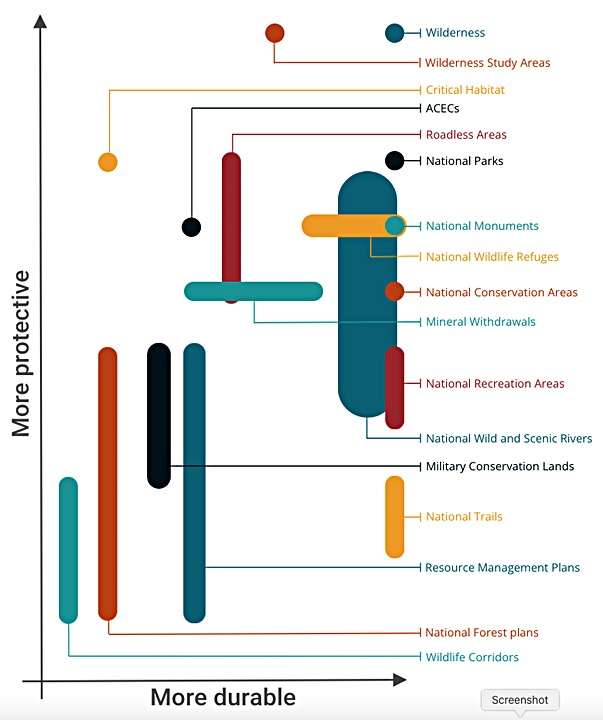The Center for Western Priorities is excited to release Conservation Toolbox, a comprehensive guide to the many tools available to protect America’s land, water, and biodiversity.
Beyond the most well-known designations like national parks and national monuments, there are many different tools available for achieving conservation objectives, and this guide helps readers understand the options available to policymakers and communities looking to protect public lands.
Some tools provide stronger, more durable protections, while others are quicker and easier to implement. All will be necessary in order to reach the national goal of protecting 30 percent of America’s land and water by 2030, a target scientists urge is necessary to protect biodiversity and mitigate the worst impacts of climate change.
The following scatterplot graph suggests the relative durability and protection offered by various conservation designations.
The Center for Western Priorities released the following statement from Director of Campaigns Lauren Bogard:
“The right tool for the job can make all the difference, and the same is certainly true when it comes to conservation. Thankfully, as this report demonstrates, there are many tools available to increase protections for public lands, each with their own strengths and differences. We hope that this report will help Western communities identify and pursue the best tool to protect vulnerable public lands.
“Conservation Toolbox seeks to emphasize that conservation is not a “one and done” scenario—it is more often a path than a final destination. The examples in this report show that small steps can often lead to major land protections. A local effort to better preserve a special area or fragile landscape today could start a cascade that leads to the designation of a new national park or monument years from now. And at the current rate of biodiversity loss, there’s no time to wait.”
The report includes detailed information about and examples of 17 conservation tools and methods, as well as a strength and durability chart showing how permanent and protective each tool is in relation to the others. The tools and methods included in the report were chosen with a focus on those best able to increase protection for cultural sites and biodiversity on federal public lands.
For more information, visit westernpriorities.org.
Sign up for Look West to get daily public lands and energy news sent to your inbox.

